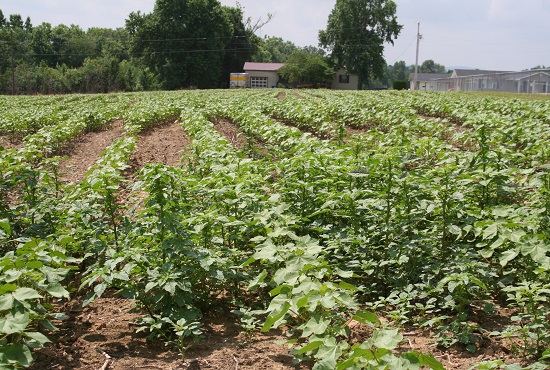India’s Export Ban Could Prompt Mills to Switch to Polyester
For the second time in two years, India’s government has decided to ban cotton exports to ensure an affordable supply of fiber for the domestic textile industry. In the short term, the world’s growing stocks should prevent the type of dramatic volatility that occurred last year, but the long-term effect could hurt cotton in its ongoing battle with synthetics for market share.
“The export ban will have limited immediate effect on the world cotton market because supplies are relatively abundant,” Terry Townsend, executive director of the International Cotton Advisory Committee (ICAC), told Cotton International. “The companies with whom contracts have been signed are directly affected and will have to scramble to substitute origins and pay value differences. Prices rose yesterday, but the crisis will pass and long term fundamentals suggest that prices will drop again. The costs will be in the millions.”
At press time, the ban is under review and some sources say it could be overturned as early as next week. Growers and ginners are in an uproar, as is Sharad Pawar, the country’s Minister of Agriculture, who said he was completely unaware that the ban was imminent.The export ban was announced was announced by India’s Directorate General of Foreign Trade without consulting him, according to Pawar. A meeting of government officials has been called for Friday, March 9, to review and possibly overturn the ban. India has already exported 8.5 million bales in the fiscal year ending March 31, slightly more than the government’s target of 8.4 million bales.
Sources say that the target number was based on previous estimates about cotton production and domestic mill consumption. With a comfortable crop size and mill consumption somewhat lower than anticipated due to reasons like financial constraints and the carryover of losses from last year, the government might have to alter its target number to ensure that growers are satisfied and able to secure a reasonable price for their raw cotton. Early reports are that the target number could be raised by as much as 3 million bales.
Timing is a key element because the longer the ban stays in effect, the greater the long-term impact it could have on the cotton supply chain, according to Townsend. “The impact of this policy decision by a government is to disrupt the cotton value chain. The longer-term impact is to further erode confidence in the world cotton trading system, and the rational response by textile mills will be to switch to polyester whenever they are able because these disruptions do not occur in the polyester pipeline. Indian cotton will be discounted in the future because of fear of future trade disruptions,” he says.








